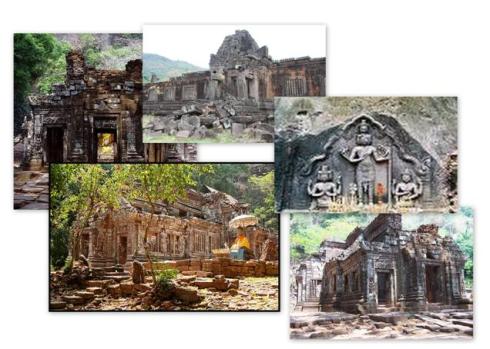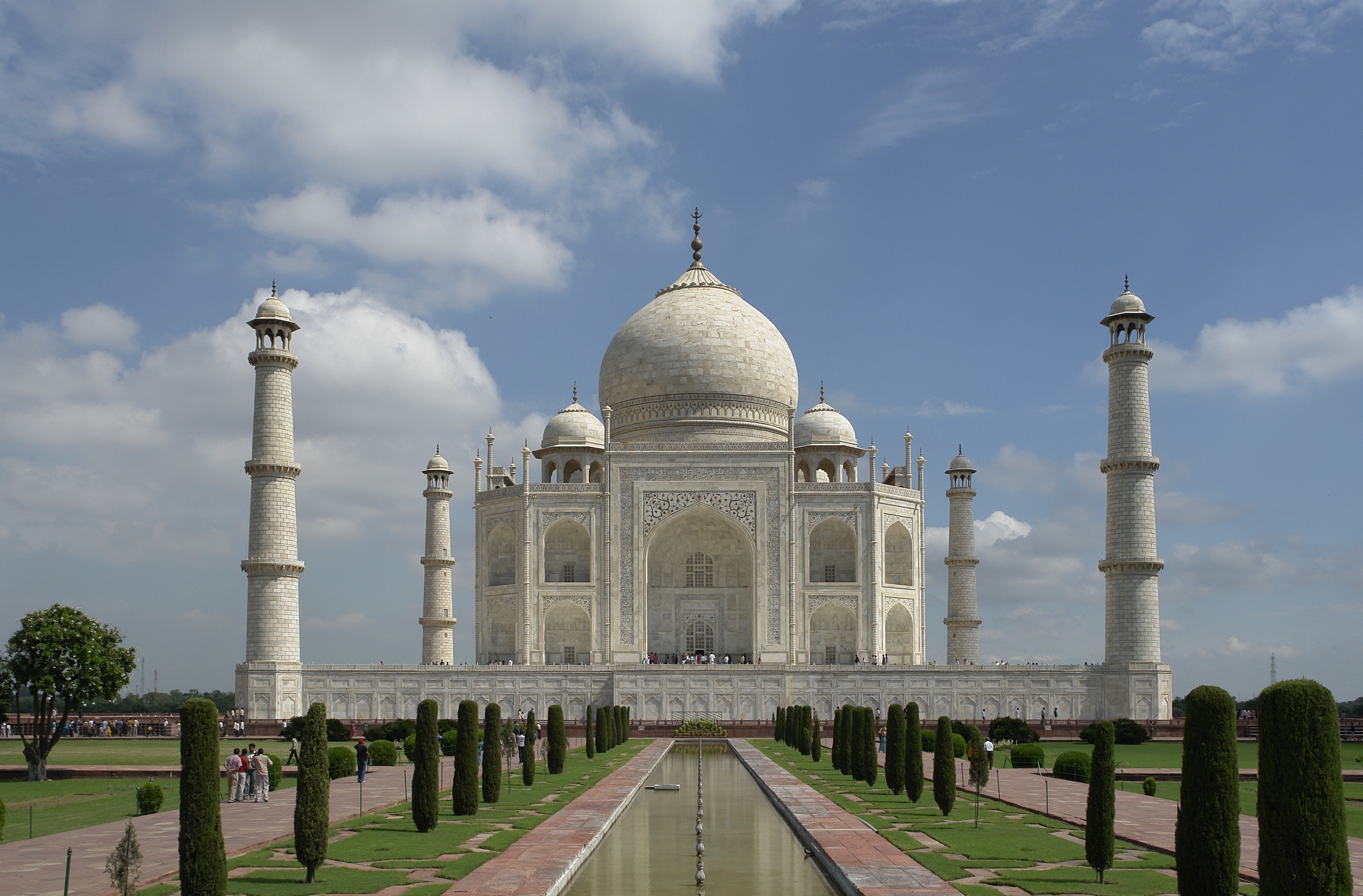

A sad consequence of the racist historiography of the
19th century Indologists and their successors is the neglect of India's interaction with Africa. Cyril Hromnik's
Indo-Africa (1981) is the only book on the Indian contribution to the history of sub-Saharan Africa that I am aware of, but it is just an exploratory study.
The story of India's interaction with Egypt is better known, if only to scholars. Two important figures in this story are Dasharatha and the Sun King -- and I don't mean the Suryavanshi king Dasharatha and his son Rama, nor Louis IV, the French Sun King. My subjects are two historical persons with Indic connections -- one from North Mesopotamia and the other from Egypt.
The Sun King Akhenaten of Egypt (ruled 1352-1336 BC according to the mainstream view) was the son-in-law to Dasharatha, the Mitanni king of North Syria, through the queen, Kiya. (The name Dasharatha is spelled Tushratta in the Hittite cuneiform script, which does not distinguish between 'd' and 't' very well. Some have suggested that the Sanskrit original is Tvesharatha, “having splendid chariots.”) Letters exchanged between Akhenaten and Dasharatha have been found in Amarna in Egypt and other evidence comes from the tombs of the period that have been discovered in excellent condition.
The Amarna age is now one of the best-known and most romantic periods of ancient Egypt. Akhenaten was a revolutionary in his religious beliefs, and many argue that his ideas mark the beginnings of the Western monotheistic tradition. This period also saw the fabulously beautiful Nefertiti, Akhenaton's first queen who had her own Mitanni connection, palace intrigues, artistic triumph and great personal tragedy.
The
Mitanni, who worshiped Vedic gods, belonged to an Indic kingdom that was connected by marriage across several generations to the Egyptian 18th dynasty to which Akhenaten belonged. The first
Mitanni king was Sutarna I (“good sun”). He was followed by
Paratarna I (“great sun”),
Parashukshatra (“ruler with axe”),
Saukshatra (“son of Sukshatra, the good ruler”), Paratarna II, Artatama or Ritadhama (“abiding in cosmic law”), Sutarna II, Dasharatha, and finally
Mativaja (Matiwazza, “whose wealth is prayer”) during whose lifetime the Mitanni state appears to have become a vassal to
Assyria.
The daughter of King Artatama was married to Tuthmose IV, Akhenaten's grandfather, and the daughter of Sutarna II (Gilukhipa) was married to his father, Amenhotep III, the great builder of temples who ruled during 1390-1352 BC (“khipa” of these names is the Sanskrit “kshipa,” night). In his old age, Amenhotep wrote to Dasharatha many times wishing to marry his daughter, Tadukhipa. It appears that by the time she arrived Amenhotep III was dead. Tadukhipa married the new king Akhenaten and she became famous as the queen Kiya (short for Khipa).
The Egyptian kings had other wives as well. Akhenaten's mother, Tiye, was the daughter of Yuya, who was a Mitanni married to a Nubian. It appears that Nefertiti was the daughter of Tiye's brother Ay, who was to become king himself. The 18th dynasty had a liberal dose of Indic blood.
But how could an Indic kingdom be so far from India, near Egypt? After catastrophic earthquakes dried up the Sarasvati river around 1900 BC, many groups of Indic people started moving West. We see Kassites, a somewhat shadowy aristocracy with Indic names and worshiping Surya and the Maruts, in Western Iran about 1800 BC. They captured power in Babylon in 1600 BC, which they were to rule for over 500 years.
The Mitanni ruled northern
Mesopotamia (including Syria) for about 300 years, starting 1600 BC, out of their capital of Vasukhani.
(For Mitanni names, I give standard Sanskrit spellings rather than the form that we find in inscriptions in the inadequate cuneiform script, such as Wassukkani for Vasukhani, “a mine of wealth.”) Their warriors were called
marya, which is the proper Sanskrit term for it.
In a treaty between the
Hittites and the
Mitanni, Indic deities
Mitra, Varuna, Indra, and Nasatya (Ashvins) are invoked. A text by a Mitannian named Kikkuli uses words such as
aika (eka, one),
tera (tri, three), panza (pancha, five), satta (sapta, seven), na (nava, nine), vartana (vartana, round). Another text has babru (babhru, brown), parita (palita, grey), and pinkara (pingala, red). Their chief festival was the celebration of
vishuva (solstice) very much like in India. It is not only the kings who had Sanskrit names; a large number of other
Sanskrit names have been unearthed in the records from the area.
Akhenaten (“glory of the Aten”) ascended the throne as
Amenhotep (“Amun is content”) IV but he changed his name to honour
Aten (“One god” represented as the solar disk) in his sixth year of rule. He moved his capital from Thebes to
Akhetaten (“Horizon of Aten”), now known as Amarna, where palaces and buildings were built from mud brick, and in which he built a splendid temple to Aten filled with religious art.
After his father's death, he built temples on the perimeter of the famous Temple of Amun at Karnak and dedicated them to Aten, rather than Amun (“the Hidden One,” the principal deity at the time, also known as Amen). He erased the names of other gods, particularly Amun, and he also erased his father's name wherever he found it.
Some argue that Akhenaten introduced monotheism by the banishment of all deities excepting his chosen one. He has been seen as a precursor to the Old Testament prophets, and thus to the Abrahamic religions, but he must have been influenced by the belief in 'One Truth' behind appearances of the Vedic system through the three generations of queens in his family from the Mitannis.
If the Vedic element was important, as is perhaps reflected in the mysticism of the Egyptian Book of the Dead, the cult of the dead and resurrection remained the most important element of the Egyptian religion. This cult continues to form the cornerstone of the three Abrahamic faiths.
Akhenaten was succeeded by
Smenkhkara, believed by some to be
Nefertiti herself, and soon afterwards by
Tutankhaten, Akhenaten's son by
Tadukhipa (Kiya) under the regentship of Ay. Akhenaten was a fanatic and the country had suffered a great deal during his reign. The nobles now reversed course. Tutankhaten changed his name to Tutankhamen (to invoke Amun), but before he could consolidate power he was dead at the age of sixteen after a rule of just nine years. His tomb was discovered intact in 1922, and now he is widely known as the Boy-King.
Tutankhamen was followed by
Ay, Nefertiti's father, who ruled for four years. He, in turn, was followed by the general Horemheb, who now erased all records of Akhenaten, and his successors. The new city was abandoned, and worship of the Amun was reestablished. Akhenaten disappeared from Egyptian history, and he was referred to as “
that heretic” or “
rebel,” until the reconstruction of history in modern times. Yet, his idea of a jealous god lived on, and prospered.
Here's an extract from a letter by
Dasharatha to Amenhotep III, Akhenaten's father:
“My father loved you, and you loved my father still more. And my father, because of his love, has given my sister to you... Behold, one chariot, two horses, one male servant, out of the booty from the land of Hatti I have sent you. And as a gift for my brother, five chariots and five teams of horses I have sent you. And as a gift for Gilukhipa, my sister, one set of gold pins, one set of gold earrings, one gold idol, and one container of sweet oil I have sent her.”
Another letter accompanies the image of
goddess of Shaushkha of Nineveh (Ishtar), Dasharatha's Ishta-devi, sent to Amenhotep III to restore him to health during illness.
Ishtar is Venus, and the Vena hymn of the
Rigveda (10.123) anticipates her Mesopotamian mythology.
A message of greetings from
Dasharatha to
Akhenaten sounds very modern: “
To Napkhuria (Akhenaten), king of Egypt, my brother, my son-in-law, who loves me and whom I love, thus speaks Dasharatha, king of Mitanni, your father-in-law who loves you, your brother. I am well. May you be well too. Your houses, Tiye, your mother, Lady of Egypt, Tadukhipa, my daughter, your wife, your other wives, your sons, your noblemen, your chariots, your horses, your soldiers, your country and everything belonging to you, may they all enjoy excellent health.”
The Vedic presence via the Mitanni in Egypt and the Near East occurs several centuries before the exodus of the Jews. This presence is sure to have left its mark in various customs, traditions, and beliefs. It may be that this encounter explains uncanny similarities in mythology and ritual, such as circumambulation around a rock or the use of a rosary of 108 beads. These practices are easily understandable within the Vedic system, whereas they are remembered as commandments to be believed without understanding in the Western faiths.
Here's a partial translation of the
Great Hymn to the Aten, attributed to Akhenaten, from the Amarna tomb of
Ay:
Your dawning is beautiful in the horizon of heaven,
O living Aten, creator of life!
When you set in the western horizon,
Earth falls into a deathly darkness.
People sleep in chambers, heads covered,
oblivious of the others,
that their possessions in their head are stolen.
Every lion comes forth from its den,
the serpents sting.
Darkness reigns, earth is silent,
as their maker rests in heavens.
Earth brightens when you rise in the horizon,
when you shine as Aten of daytime.
As you cast your rays,
the Two Lands are in festivity.
Awake, the people are on their feet.
Cleansed and clothed,
their arms adore your appearance.
The entire land sets out to work,
The beasts browse on their herbs,
trees and plants flourish.
The birds fly from their nests,
their wings greeting you,
as the sheep frisk on their feet,
and the winged things fly.
All live when you dawn for them.
Boats travel north and south,
and roads lie open when you dawn.
The fish in the river leap up before you,
your rays are in the midst of the sea.
You are the one who makes the seed in men,
who feeds the son in the mother's womb,
who soothes him that he may not weep,
a nurse even in the womb.
You give him breath when he is born,
you open his mouth in speech.
When the chick in the egg cries in the shell,
you give him breath to sustain him.
You have perfected him
to break out from the egg,
chirp and run around on his two feet.
Your works are manifold,
though hidden from sight,
O One God, beside whom there is no other.
You created the world as you wished,
you alone --
all people, herds, flying creatures,
reckoning of their days.
You make the heavens
to see your creation.
You make the beauty of form,
through yourself, alone.
You are in my heart,
there is no other who knows you.
Save your son, Akhenaten.
You have taught him your ways,
your might.
The world is in your hand,
you are duration,
beyond mere limbs.
Man lives by you,
and eyes look upon your beauty.
You established this world
for your Son,
who came from your body,
the King, the Lord of the Two Lands.
This hymn is often compared to the Psalm 104 of the Old Testament. The Rigvedic hymns
1.50, 4.13, 10.37 to
Surya provide fascinating counterpoint and parallels.










